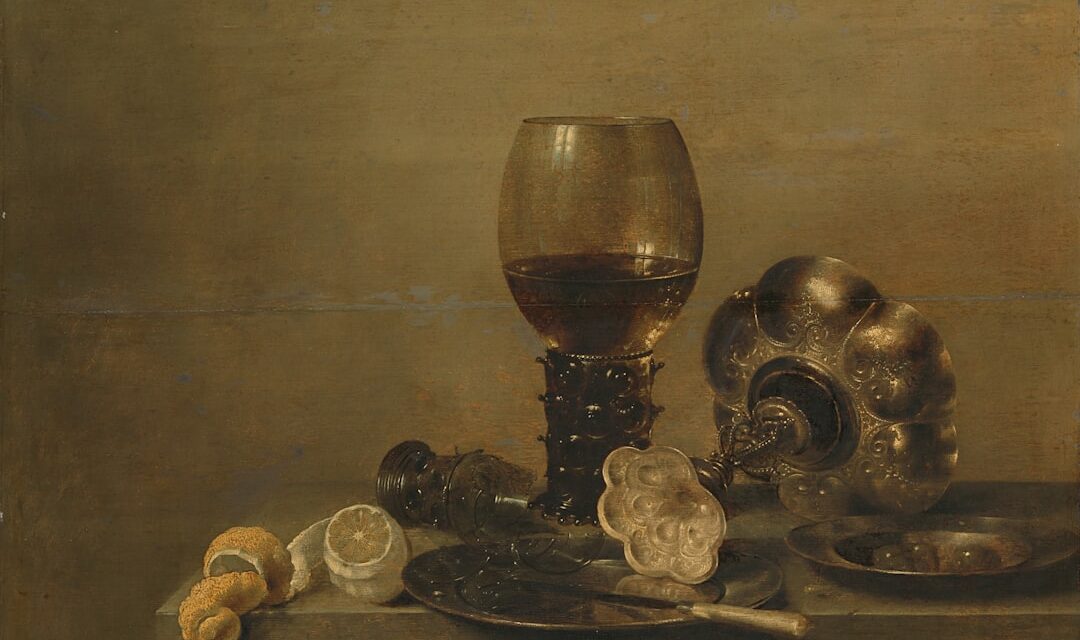Vincent van Gogh was born on 30 March 1853 in Groot-Zundert, Netherlands. He was the eldest of six children born to Theodorus van Gogh, a minister of the Dutch Reformed Church, and Anna Cornelia Carbentus. Van Gogh demonstrated an early interest in art, though his career as an artist did not commence until later in life.
Following a series of unsuccessful career attempts, including positions as an art dealer and a teacher, van Gogh resolved to pursue his passion for art. He began his formal art education at the age of 27, studying at the Royal Academy of Fine Arts in Antwerp, Belgium. Subsequently, he relocated to Paris to study under the tutelage of Fernand Cormon, a French painter renowned for his realist style.
Van Gogh’s early life was characterised by personal difficulties and mental health issues. He experienced episodes of depression and anxiety, which would later significantly influence his artistic career. Despite these challenges, van Gogh remained committed to his art and continued to develop his distinctive style and vision.
His early experiences and education established the foundation for the unique artistic style that would later define his work.
Summary
- Early Life and Education:
- The artist was born and raised in a small town in the countryside, where they developed a love for nature and the outdoors from a young age.
- They showed an early talent for drawing and painting, which led them to pursue formal art education at a prestigious art school in the city.
- Artistic Style and Influences:
- The artist’s style is characterised by bold, vibrant colours and dynamic brushwork, influenced by the Impressionist and Fauvist movements.
- They drew inspiration from the natural world, particularly landscapes and wildlife, as well as from the works of other renowned artists such as Monet and Matisse.
- Rise to Prominence:
- After completing their education, the artist gained recognition for their unique style and quickly began exhibiting their work in galleries and art shows.
- Their distinctive approach to capturing the beauty of the natural world garnered attention from art critics and collectors, propelling them to prominence in the art world.
- Patronage and Collaborations:
- Throughout their career, the artist received patronage from influential art collectors and patrons, allowing them to focus on their creative pursuits without financial constraints.
- They also collaborated with other artists and designers on various projects, further expanding their artistic reach and influence.
- Themes and Subject Matter:
- The artist’s work often explores themes of harmony and tranquillity in nature, depicting serene landscapes and the peaceful coexistence of humans and wildlife.
- They also delved into the realm of abstraction, using bold shapes and patterns to convey the energy and vitality of the natural world.
- Legacy and Impact:
- The artist’s legacy is marked by their significant contribution to the art world, inspiring future generations of artists to explore the beauty of nature through their work.
- Their impact can be seen in the continued appreciation for their art, as well as in the lasting influence they have had on the development of contemporary landscape painting.
- Notable Works:
- “Sunset Over the Valley” – a striking portrayal of the artist’s signature use of vibrant colours and expressive brushstrokes to capture the beauty of a rural landscape at dusk.
- “Wildlife Harmony” – a captivating composition that showcases the artist’s ability to convey the peaceful coexistence of animals and humans in a natural setting.
Artistic Style and Influences
Innovative Use of Colour
One of the most distinctive aspects of van Gogh’s style is his use of colour. He was known for his bold and unconventional use of colour, often using vivid hues to convey emotion and energy in his paintings. His brushwork was also highly expressive, with visible strokes that added texture and movement to his work.
Personal and Emotional Expression
Van Gogh’s style was deeply personal and reflective of his inner turmoil and emotional struggles. His work often depicted scenes from nature, such as landscapes and flowers, which he imbued with a sense of vitality and intensity.
A Legacy of Emotive Art
Through his innovative use of colour and expressive brushwork, van Gogh created a unique and emotive style that continues to captivate audiences to this day. His legacy as a pioneering post-impressionist artist is a testament to the power of art to convey the deepest human emotions.
Rise to Prominence

Despite facing numerous personal challenges, van Gogh’s artistic career began to gain momentum in the late 1880s. His move to Arles in the south of France marked a turning point in his career, where he found inspiration in the vibrant landscapes and light of the region. It was during this time that he created some of his most iconic works, including “The Starry Night” and “Sunflowers.” Van Gogh’s unique style began to attract attention from fellow artists and collectors, and he developed friendships with artists such as Paul Gauguin and Émile Bernard.
Van Gogh’s rise to prominence was also marked by a series of exhibitions and critical acclaim for his work. His paintings began to garner attention from art critics and collectors, and he received recognition for his innovative approach to colour and form. Despite this growing success, van Gogh continued to struggle with mental health issues, which would ultimately have a profound impact on his life and work.
Patronage and Collaborations
Throughout his career, van Gogh relied on the support of patrons and collaborators to sustain his artistic practice. His brother Theo van Gogh played a crucial role in supporting Vincent both financially and emotionally. Theo was an art dealer who believed in Vincent’s talent and provided him with financial assistance and encouragement throughout his career.
Their correspondence provides insight into Vincent’s artistic development and the challenges he faced as an artist. Van Gogh also collaborated with other artists, most notably Paul Gauguin during his time in Arles. The two artists shared a mutual admiration for each other’s work and engaged in a creative exchange that influenced their artistic styles.
Their collaboration resulted in a series of paintings that reflected their shared interest in exploring new forms of expression and capturing the essence of their surroundings. Despite their creative partnership, their relationship was fraught with tension, which ultimately led to a dramatic falling out.
Themes and Subject Matter
Van Gogh’s work is characterised by a diverse range of themes and subject matter, reflecting his deep connection to nature and his inner emotional landscape. His paintings often depicted scenes from everyday life, such as landscapes, still lifes, and portraits, which he imbued with a sense of vitality and emotion. Van Gogh’s use of colour and brushwork conveyed a sense of energy and movement that brought his subjects to life.
One of the recurring themes in van Gogh’s work is his fascination with nature and the natural world. He often depicted landscapes and rural scenes, capturing the beauty and tranquillity of the countryside. His paintings of sunflowers and irises are also iconic examples of his exploration of nature’s beauty.
Van Gogh’s work also delved into themes of human suffering and resilience, reflecting his own struggles with mental health and personal turmoil.
Legacy and Impact

The Enduring Legacy of Vincent van Gogh
Vincent van Gogh’s legacy as an artist has had a profound impact on the art world and continues to resonate with audiences today. Despite facing numerous personal challenges during his lifetime, van Gogh remained dedicated to his art and developed a distinctive style that has left an indelible mark on the history of art. His work has inspired countless artists and continues to captivate audiences with its emotive power and expressive style.
A Far-Reaching Influence
Van Gogh’s impact extends beyond the realm of art, influencing popular culture and inspiring countless adaptations and interpretations of his work. His paintings have been the subject of numerous exhibitions, books, films, and even fashion collections, demonstrating the enduring appeal of his artistic vision.
A Life of Inspiration
Van Gogh’s life story has also captured the public imagination, with numerous biographies and documentaries exploring his life and legacy.
Notable Works
Vincent van Gogh’s body of work includes numerous iconic paintings that have become synonymous with his artistic legacy. “The Starry Night” is perhaps one of his most famous works, known for its swirling sky and vibrant colours that capture the essence of the night sky. “Sunflowers” is another iconic series of paintings that reflect van Gogh’s fascination with nature and his innovative use of colour.
Other notable works include “Irises,” “The Bedroom,” “Café Terrace at Night,” and “Self-Portrait with Bandaged Ear.” Each painting reflects van Gogh’s unique artistic vision and emotional intensity, showcasing his ability to capture the beauty and complexity of the world around him. These works continue to be celebrated for their emotive power and enduring impact on the history of art.
If you are interested in learning more about the art movements that followed Peter Paul Rubens’ Baroque style, you may want to read the article on Impressionism. This movement, which emerged in the 19th century, focused on capturing the fleeting effects of light and atmosphere in their paintings. You can find more information about Impressionism here.
FAQs
Who was Peter Paul Rubens?
Peter Paul Rubens was a Flemish artist who lived during the Baroque period. He was known for his extravagant style and his ability to capture movement and emotion in his paintings.
What was Peter Paul Rubens known for?
Rubens was known for his religious and mythological paintings, as well as his portraits. He was also known for his use of vibrant colors and dramatic, dynamic compositions.
Where and when did Peter Paul Rubens live?
Peter Paul Rubens lived in the 16th and 17th centuries in what is now modern-day Belgium. He was born in Siegen, Westphalia, and spent most of his life in Antwerp.
What was Peter Paul Rubens’ artistic style?
Rubens’ artistic style was characterized by its dramatic and dynamic compositions, use of vibrant colors, and ability to capture movement and emotion in his paintings. He was also known for his skillful use of light and shadow.
What are some famous works by Peter Paul Rubens?
Some of Rubens’ most famous works include “The Descent from the Cross,” “The Elevation of the Cross,” “The Garden of Love,” and “The Rape of the Daughters of Leucippus.”
What was Peter Paul Rubens’ impact on the art world?
Rubens had a significant impact on the art world during his time and beyond. His work influenced many artists who came after him, and he is considered one of the most important figures in the Baroque period. His use of color, composition, and emotion continues to inspire artists to this day.




